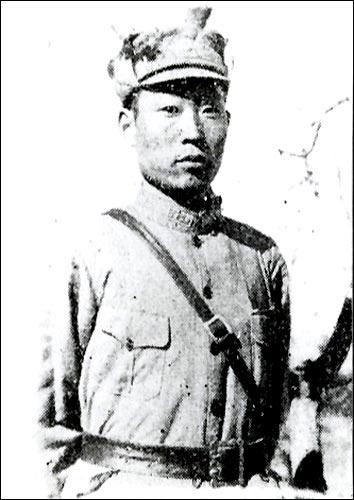No. 98 at Xin'anli: the former residence of General Zhao Dengyu
2009-09-02 15:33 BJT
The former residence of Zhao Dengyu, a general who took part in resisting Japanese troops during the Lugou Bridge Incident on July 7 1937, is located in Xinsi hutong southwest of Beijing’s drum tower, and is where the Dongcheng Hospital, No. 98 at Xin'anli, stands today.
 |
|
General Zhao Dengyu |
Xin’anli sounds very elegant, but in the past, it was called Xinsi hutong. Over the years, the name Xinsi hutong became Xin’anli, and the neighborhood branched out into various alleys. In reality, Xin’anli wasn’t big. The hutong was quite narrow, and cars were unable to pass through, even two small rickshaws were unable to pass side by side.
A few mansions of higher nobility were located near Xin’anli, but it’s not known if Xin’anli was the stables of the nobility. In the past, the stables were located in areas with a lot of space. There needed to be room for horse stalls, feeding troughs, and most importantly there still needed to be enough space for the horses to roam. For instance, the former residence of Guomoruo used to be Lejia Garden, and before that, it was the stables for the Gongqin noble family. It was common for these stabling grounds to eventually become the homes of the common people. After the Revolution of 1911, the Manchu and Mongolian nobles frittered away their fortunes and had to sell their houses and land, including their stables.
Today, General Zhao Dengyu’s former residence has become the Dongcheng hospital. According to historical records, Zhao Dengyu’s eldest daughter Zhao Xuefen recalls that during her childhood, she could see the drum tower from their garden. There were even fake mountains and jars of large lotus flowers on the property. Today, two fake mountains and one jar of lotus flowers remain in the garden at the No. 98 courtyard. In 1949, the Chinese Peasants’ and Workers’ Democratic Party moved into Xin’anli.
After Zhao Dengyu’s death, he was hastily buried by Peking Red Cross. A few days later, Buddhist monks from Longquan temple at Taoranting removed Zhao’s body, placed it in a good quality coffin and temporarily placed it in the temple. The Buddhist monks respected Zhao Dengyu’s nationalist spirit, and often lacquered Zhao’s coffin until it shone. Zhao Xuefen’s only memory of her father was of a day a few months after his death, when she and her family were taken to see her father’s body. The entire family was crying in front of a shiny black coffin that was placed atop two wide wooden planks.
Zhao Dengyu’s coffin was placed at Longquan temple for nine years until July 28, 1946 after the War of Resistance Against Japan ended. It was then that the government of Peking held a public memorial ceremony at Zhongshan Park. He was ultimately buried at Xidaokou which is about one kilometer west of Lugou Bridge.
Translated by LOTO
Editor: Shi Taoyang | Source: CCTV.com
 Mail
Mail Share
Share Print
Print


 Video
Video









 2009 China Central Television. All Rights Reserved
2009 China Central Television. All Rights Reserved